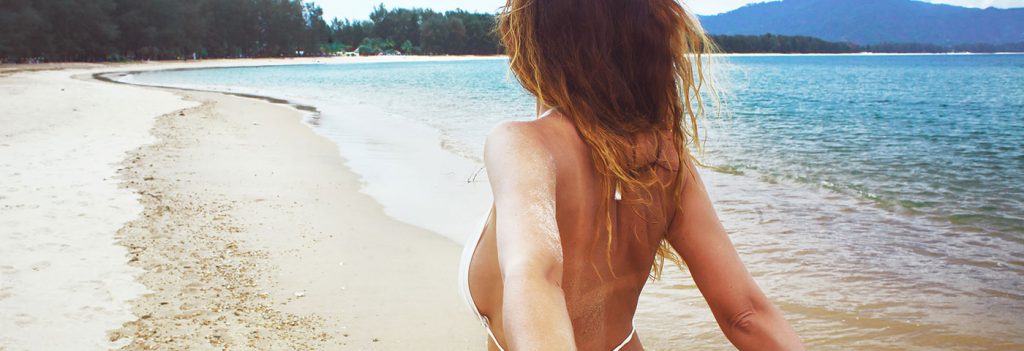There’s a bit of a joke these days that you’ll never be a successful digital influencer in the travel sphere if you don’t post photos on the beach in a bikini. And if you can’t do that, at least post a photo of the coastline. Even better if it’s at sunset!
Certain types of travel photos get a lot of attention on social media. Beaches and sunsets are to Instagram what cats are to YouTube. And the digital influencers who use this are able to build up large followings.
It’s easy to be seduced by big numbers but, in the world of digital media, quality is just as important as quantity – and there are plenty of influencers who have both. Over recent years, more perceptive brands have been focusing on the engagement of the people they work with, rather than pure follower numbers.
Now it’s time to take the next step and realise that not all good engagement is equal. The question is, does it lead to the right result?
Anyone working in marketing will have seen different models of ‘the funnel’, the process that consumers follow as they make a purchase. With travellers choosing a destination, there are four main steps.
- Awareness: The traveller becomes aware that the destination exists and what is on offer.
- Inspiration: The traveller feels a desire to go to the destination and wants to make a purchase.
- Education: The traveller finds answers to questions standing in the way of a purchase, including details about affordability, safety, or logistics.
- Information: The traveller has made the main decision and is now organising specific elements of their itinerary.
Each destination has different priorities at different stages of their marketing strategy. Before working with digital influencers, it’s important to identify which of the steps in this funnel are the priority. Only then can the destination identify the most appropriate influencers to address those aims.
It would be a mistake to view all influencers as a homogenous group. In many ways, the digital media industry is just like the traditional media industry. A printed guidebook with has a different effect to a destination feature in a newspaper. A billboard of a celebrity on a plane achieves a different goal to a television series about a country. There is as much range within the digital influencer industry.
Let’s look at examples of how appropriate influencers could work with a destination within these steps.
If the destination is a lesser-known region where other parts of the country dominate tourism, awareness may be the priority.
In this case, influencers with a considerable number of followers will be important. However, it is vital that followers engage with the influencer about destinations they showcase, not simply about their personality, family or fashion. Make sure the influencer publishes detailed descriptions about locations, not just photos with the destination as a background.
Also, social media may be more important than a blog in this situation. Much of a blog’s traffic comes from search but people can’t search for a destination they don’t know exists!
Maybe the destination is perceived as boring. In this case, inspiration may be the most important step.
To achieve this, it would be beneficial to work with influencers who put themselves into the story and show themselves enjoying activities in the destination. The best way to be inspired is to see another person having a great time!
It’s also important to work with niche influencers if that’s part of the marketing strategy – for instance: adventure bloggers for outdoor activities or food bloggers for cuisine.
Working with influencers who make videos, do live social media coverage and write narrative-style blog posts are useful approaches to telling inspiring stories.
When a destination feels it is suffering because potential travellers think it is too expensive or dangerous, then education could be the aim
In this situation, it is very important to deal with influencers who produce detailed information that can be easily found when a potential traveller is doing research. It would be a good idea to work with bloggers who write practical guides showing how to save money in the destination or explain that it is a safe place. Travellers often have more trust in guides from bloggers than from tourism authorities, who can be perceived as pushing an agenda.
Live social media is less important in this scenario than having accurate and useful information because much of this research will be done by search.
If a destination gets too many visitors to a particular city and wants to disperse travellers throughout the region, information can help.
With a scenario like this, influencers can be used to showcase specific activities or sights within a destination. For this strategy to work, it’s important that a destination works with influencers who focus on travel and are speaking to people who are in the process of planning trips (or are currently on one). It’s more likely that someone will do research on a blog at a time close to their trip than remembering something they saw on social media previously.
The best digital influencers know their audience well and at which stages of the marketing funnel, they are speaking to them. Sunsets, beaches and bikinis may sometimes achieve the marketing goals of a destination but they should be an intentional part of a strategy, not just a chase for numbers.
Destinations and brands should not be scared to discuss their strategy with influencers to make sure that partnerships are a good fit. Creating the most appropriate type of content on the most appropriate platform is good for everyone. That way, both sides are speaking to (and influencing) the right people at the right time in the right way.
Guest author
Provided in partnership with Traverse Events.
